Great customer service!
I got an item. It broke 5 minutes after plugging it in. I called, they sent out a new one with no questions asked. The new one works great.
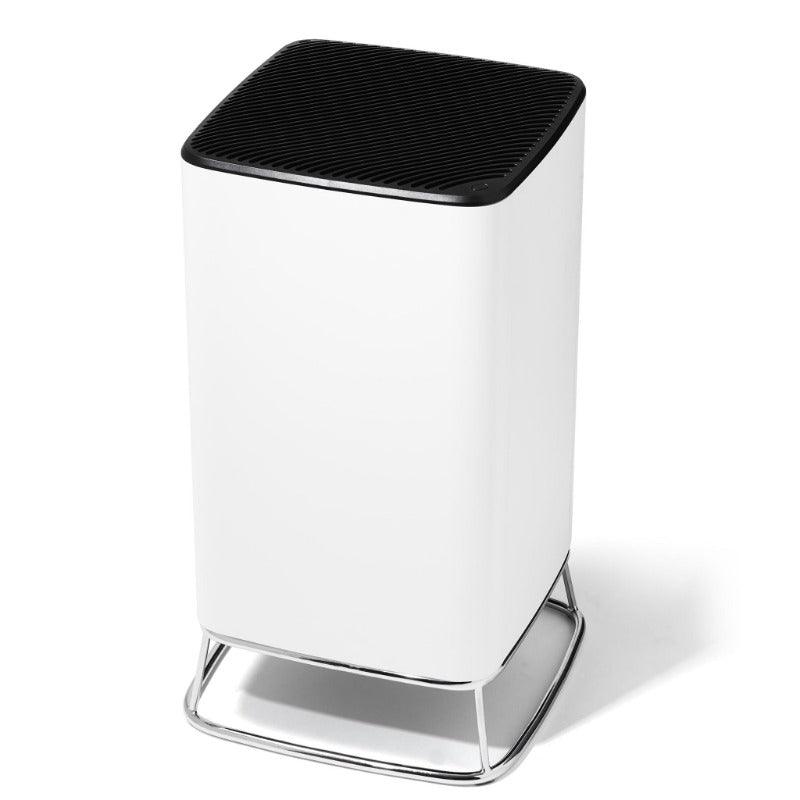
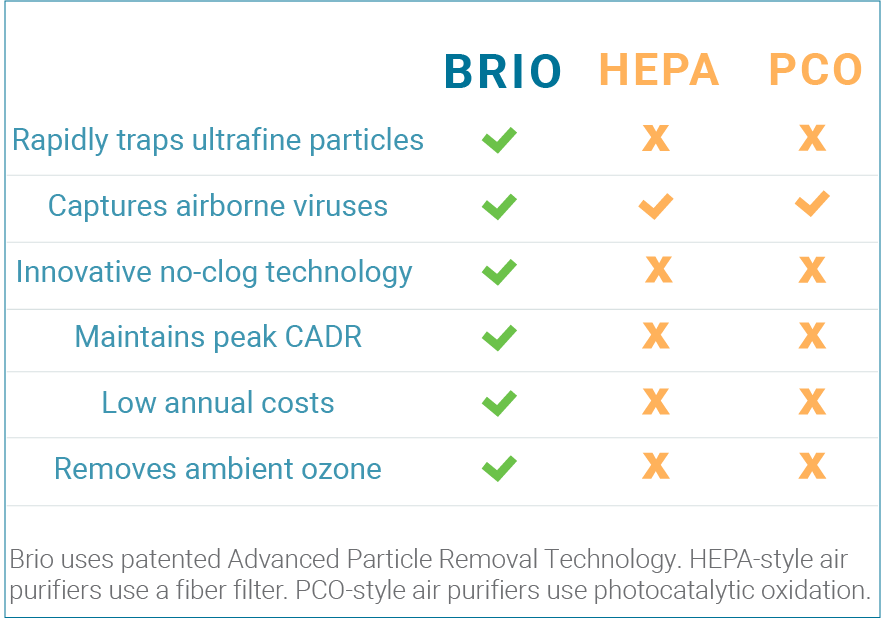
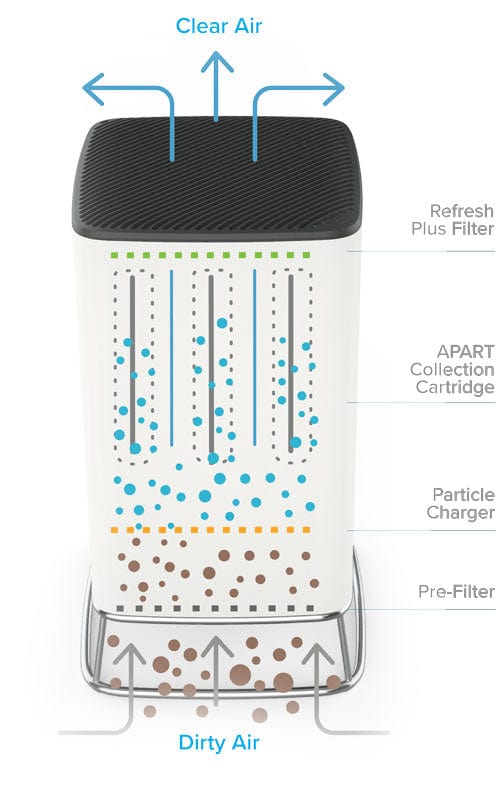
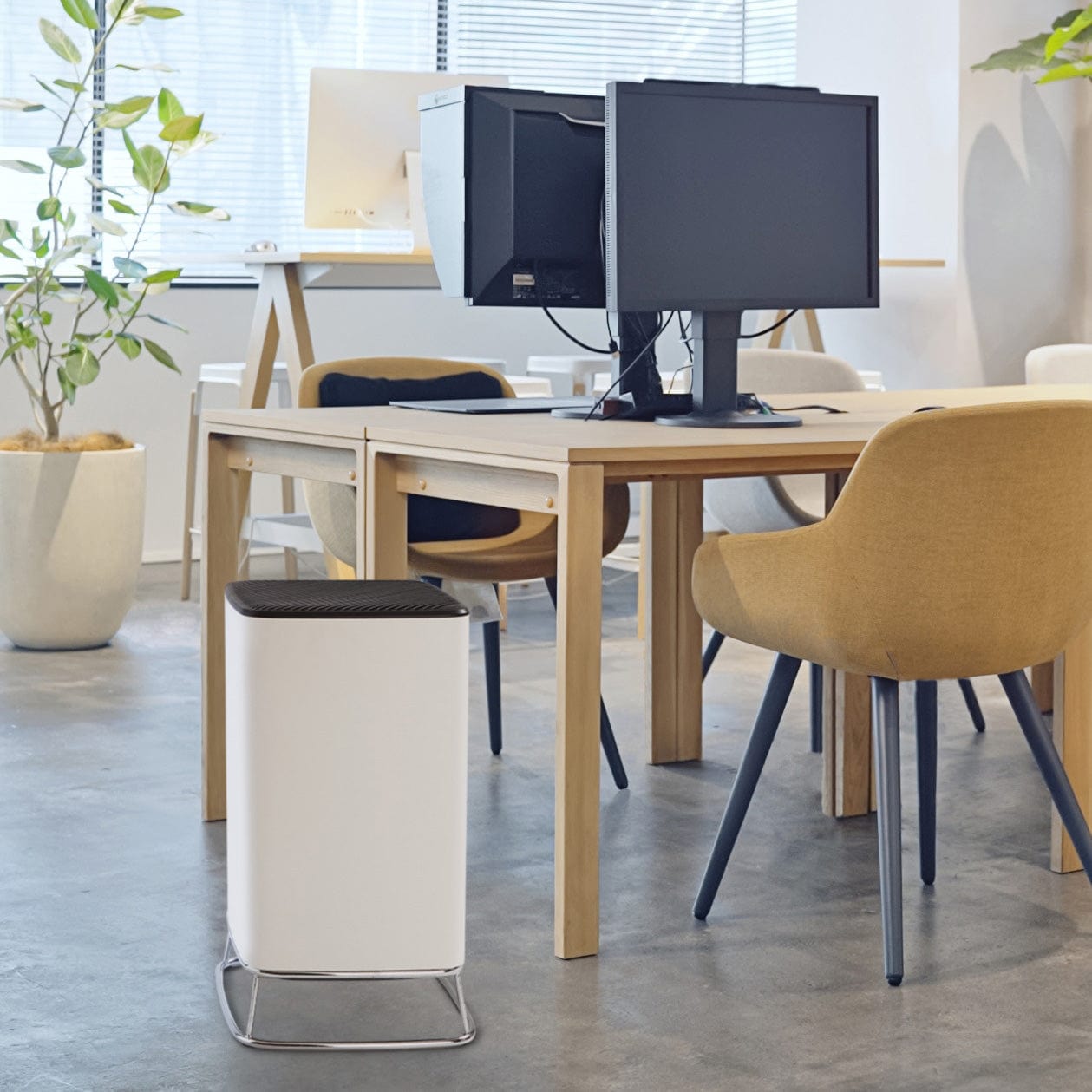
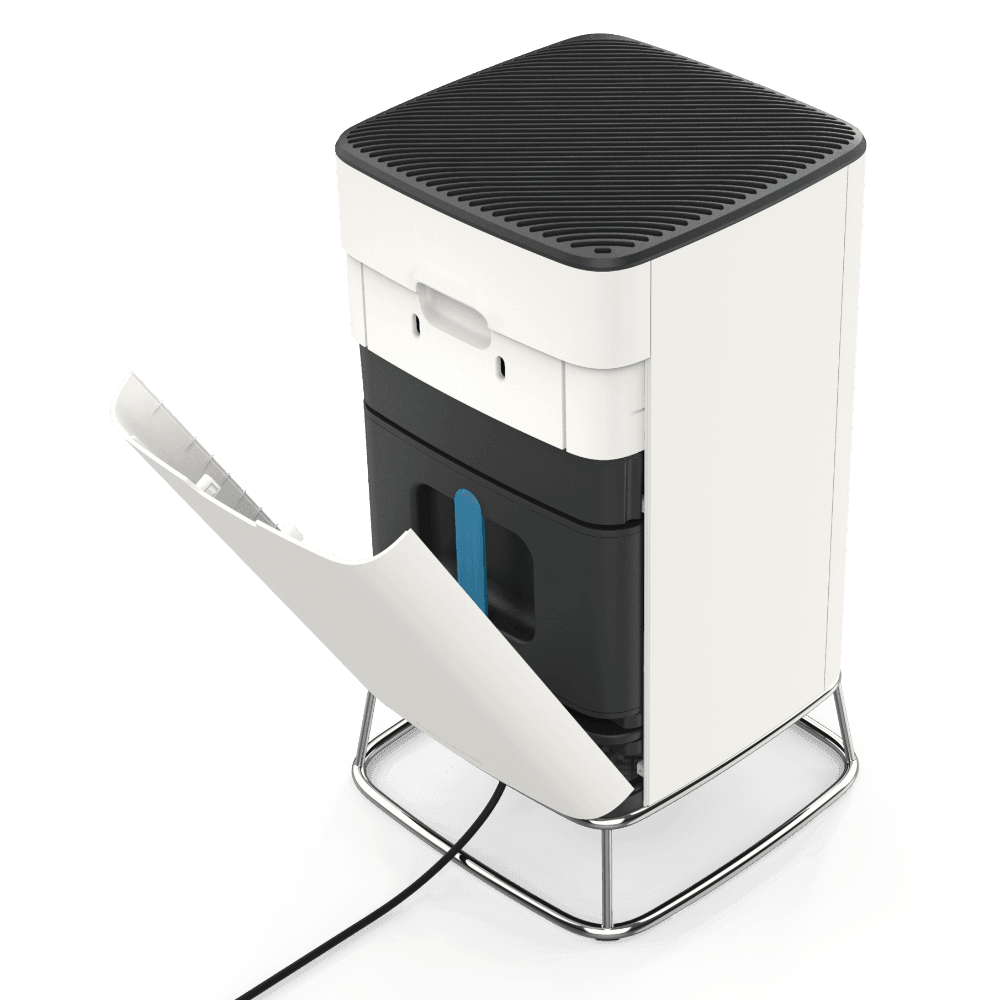
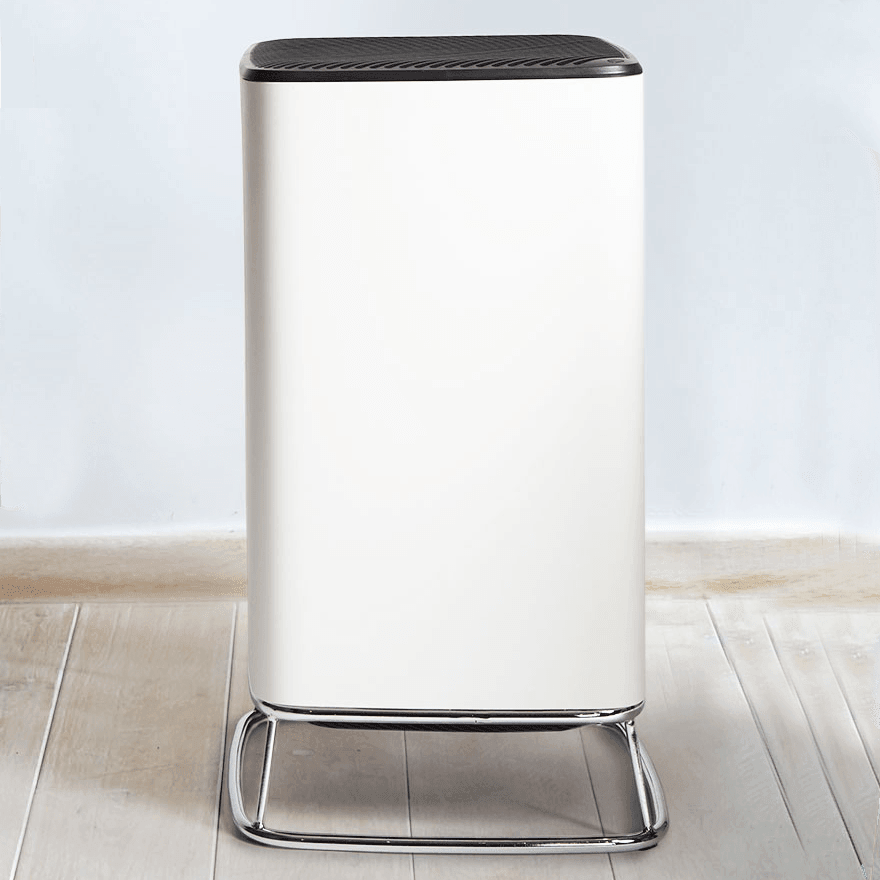
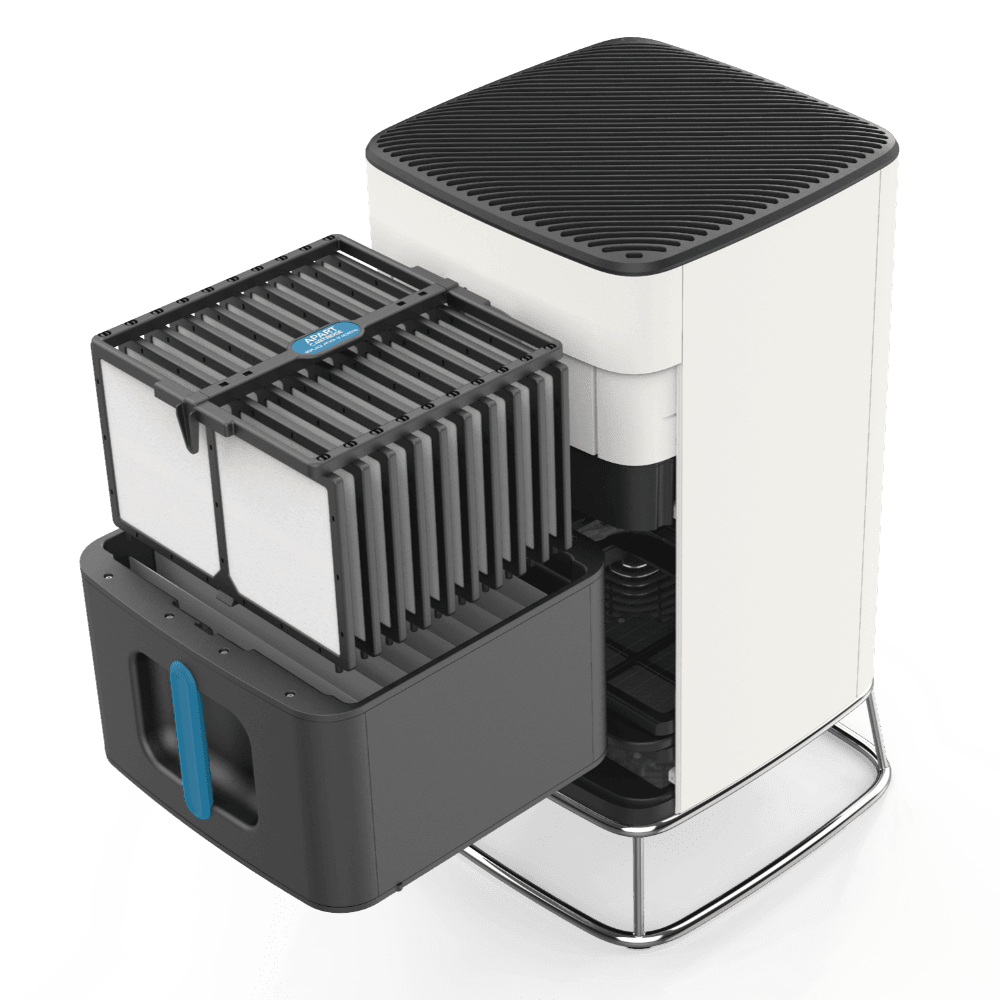


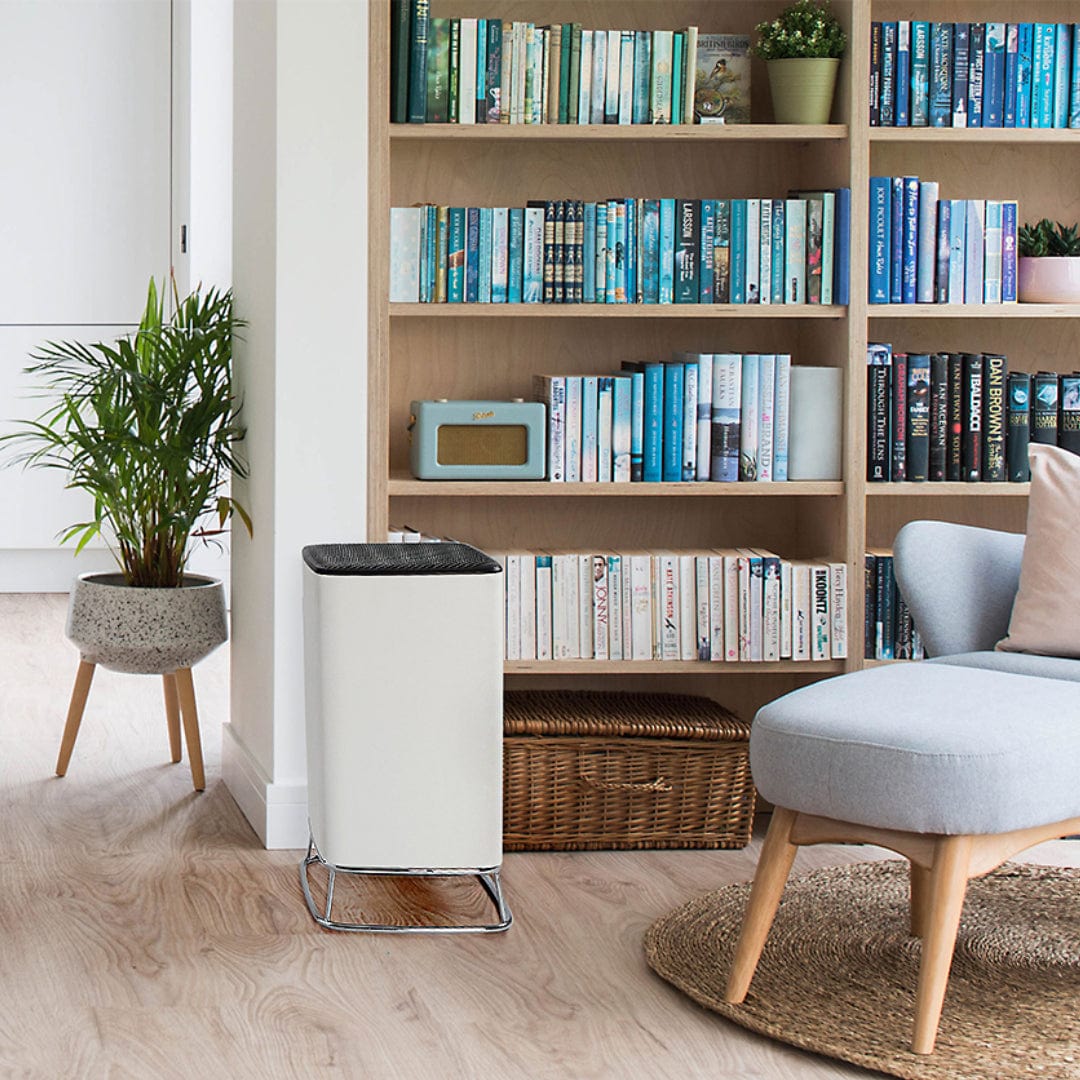










The Brio 550 Room Air Purifier uses advanced air purification technology to clean the air, removing damaging fine and ultrafine particles as small as 0.01 microns or 10 nanometers, including viruses and germs, mold spores, dust, pet dander, and particles from wildfire smoke, auto exhaust and traffic, gas stoves, and industrial pollution.
The patented design uses innovative electrostatic technology to keep effectiveness high—so your air stays clean—over the entire period between cartridge replacements. Brio's non-clogging design is a more effective solution than HEPA. Plus, Brio's long-life, non-clogging filter can last a year or longer before it needs to be changed. So, Brio saves you time and money while deep cleaning the air.
HEPA air purifiers can only filter out a maximum of 0.3 microns allowing a multitude of small particles such as viruses, smoke particles and mold toxins. The Brio 550 Room Air Purifier can remove ultrafine particles as small as 0.01 microns.
Unlike HEPA filters that clog and lose efficiency, Brio's non-clogging design ensures consistent airflow and peak performance between filter changes. With long-lasting filters that require replacement only once a year or less, Brio saves time and money while providing continuous deep air cleaning.
Brio is a smart investment to make in your indoor air quality, and the filter savings over the years make it a good value, too.
HEPA air purifiers can't make the same promise.
Mold spores are often smaller than 0.3 microns, making traditional HEPA filters less effective. Brio’s advanced electrostatic technology captures particles as small as 0.01 microns, ensuring even the tiniest mold spores are removed from the air.
By preventing the spread of airborne mold toxins, Brio protects your home from allergens that can trigger respiratory issues. Its non-clogging filter design maintains high efficiency, offering continuous protection against mold for up to a year without filter replacement. Choose Brio for cleaner, healthier air—especially in areas prone to mold growth.
Includes: 1 APART Collection Cartridge and 1 Refresh Plus Filter (a $98 value)
Couldn't load pickup availability
Free standard shipping is included for every Brio air purifier order for delivery in the 48 contiguous U.S states. Estimated delivery time is 3-7 days after the order leaves our warehouse. Delivery is UPS Ground for air purifiers and USPS for replacement cartridges and filters. We are not able to offer free shipping to Hawaii, Alaska or U.S. territories.
 |
 |
| Brio Air Purifier | APART Collection Cartridge |
 |
 |
| Refresh Plus Filter | User Guide |
Every situation is different and the answer depends on how many air changes per hour (ACH) you need, which in turn depends on the air quality in your office or home. Keep in mind the higher the ACH, the faster the air will circulate through the air purifier, removing particle pollutants. The three tables below show the maximum suggested room size (in square feet) based on Medium Speed and High Speed operation.
Brio on Medium Speed (PM2.5 CADR)
|
ACH |
One Full Air Circulation |
Room Size |
Best Use |
|
1 |
60 minutes |
1075 sf |
Not recommended |
|
2 |
30 minutes |
535 sf |
Air quality maintenance for minimal issues, good AQI |
|
3 |
20 minutes |
355 sf |
+Common household particle pollution: pollen, pet dander, dust, smoke, mold |
|
4 |
15 minutes |
270 sf |
+Known environmental air quality issues (PM 2.5); Allergies |
|
5 |
12 minutes |
215 sf |
+ Poor environmental air quality and indoor air quality issues; Allergies; Virus; Wildfire smoke |
|
6 |
10 minutes |
180 sf |
+More people in the room; Polluted outdoor and indoor environment; Allergies; Virus; Wildfire smoke |
Brio on High Speed (PM2.5 CADR)
|
ACH |
One Full Air Circulation |
Room Size |
Best Use |
|
1 |
60 minutes |
1755 sf |
Not recommended |
|
2 |
30 minutes |
880 sf |
Air quality maintenance for minimal issues, good AQI |
|
3 |
20 minutes |
580 sf |
+Common household particle pollution: pollen, pet dander, dust, smoke, mold |
|
4 |
15 minutes |
440 sf |
+Known environmental air quality issues (PM 2.5); Allergies |
|
5 |
12 minutes |
350 sf |
+ Poor environmental air quality and indoor air quality issues; Allergies; Virus; Wildfire smoke |
|
6 |
10 minutes |
290 sf |
+More crowded room; Polluted outdoor and indoor environment; Allergies; Virus; Wildfire smoke |
Brio on High Speed (Smoke CADR)
|
ACH |
One Full Air Circulation |
Room Size |
Best Use |
|
1 |
60 minutes |
1625 sf |
Not recommended |
|
2 |
30 minutes |
815 sf |
Air quality maintenance for minimal issues, good AQI |
|
3 |
20 minutes |
540 sf |
+Common household particle pollution: pollen, pet dander, dust, smoke, mold |
|
4 |
15 minutes |
405 sf |
+Known environmental air quality issues (PM 2.5); Allergies |
|
5 |
12 minutes |
325 sf |
+ Poor environmental air quality and indoor air quality issues; Allergies; Virus; Wildfire smoke |
|
6 |
10 minutes |
270 sf |
+More crowded room; Polluted outdoor and indoor environment; Allergies; Virus; Wildfire smoke |
We hope you love your Brio air purifier. Try Brio and if you are not completely satisfied, and would like to return it, just let us know within 30 days of receipt. More return information.
We want you to be completely satisfied with your Brio Air Purifier, and you have 30 days to decide if it’s right for you. Just notify us within 30 days of the receipt of your Brio air purifier that you would like to return it. To start a return, you can contact us at care@brioairpurifier.com with your order number, the date of purchase, and the email address used for your order.
To be eligible for a return, your item must be in good condition and in the original packaging. You’ll also need the receipt or proof of purchase.
After your return is approved (typically within seven working days), we’ll email you a prepaid return shipping label, as well as instructions on how and where to send your package. Items sent back to us without first requesting a return will not be accepted.
Please note there is a $25.00 return shipping charge for each Brio air purifier returned. We will deduct from your product refund.
You can always contact us for any return question at care@brioairpurifier.com
We are sorry to hear that! Please inspect your order upon receipt and contact us immediately if the item appears to be defective, damaged or if you receive the wrong item, so that we can evaluate the issue and make it right. Please retain the shipping box and all packing materials.
To start a damaged product return, please contact us at care@brioairpurifier.com with your order number, the date of purchase, and the email address used for your order. To be eligible for a return, your item in the original packaging. You’ll also need the receipt or proof of purchase. After your return is approved (typically within seven working days), we’ll email you a prepaid return shipping label, as well as instructions on how and where to send your package. Items sent back to us without first requesting a return will not be accepted.
The fastest way to ensure you get what you want is to return the item you have, and once the return is accepted, make a separate purchase for the new item.
We will notify you once we’ve received and inspected your return, and let you know if the refund was approved or not. If approved, you’ll be automatically refunded on your original payment method, less the $25 return shipping fee for change-of-mind returns. Please keep in mind it can take some time for your bank or credit card company to process and post the refund too.
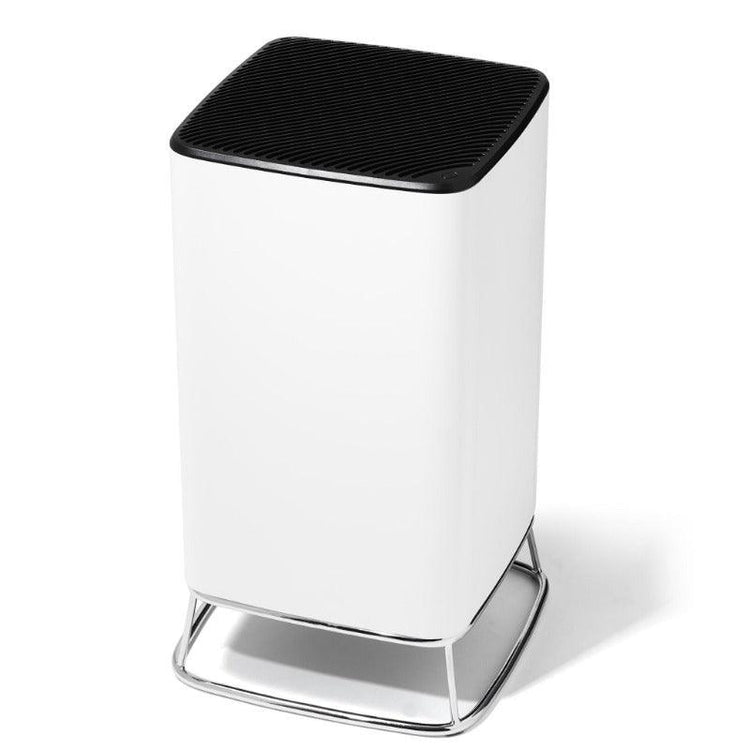
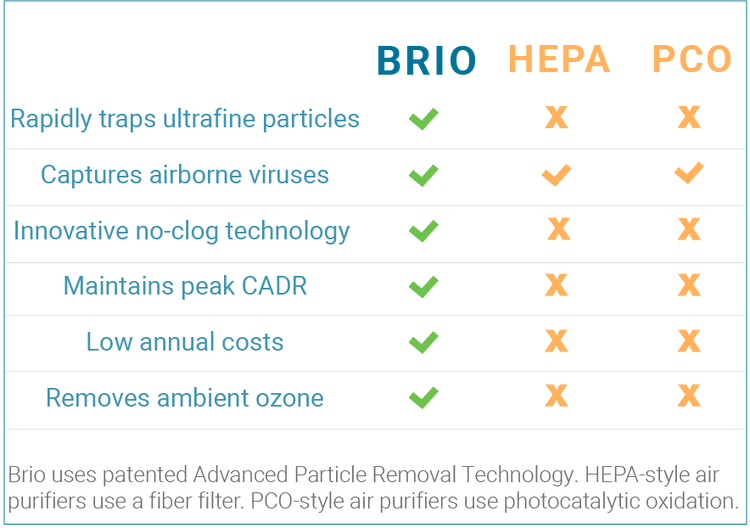
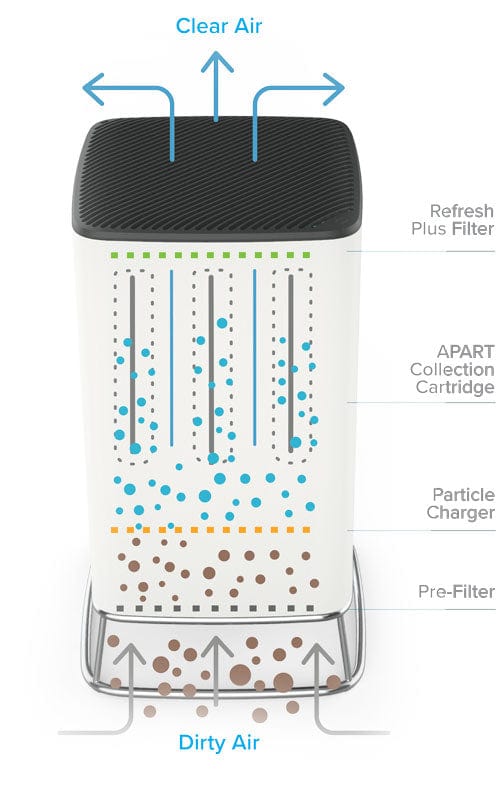
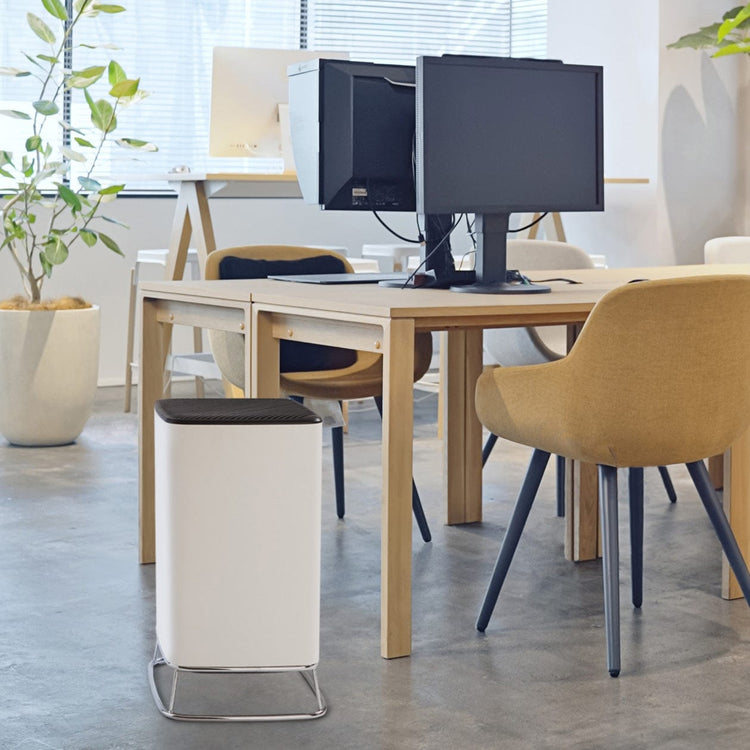
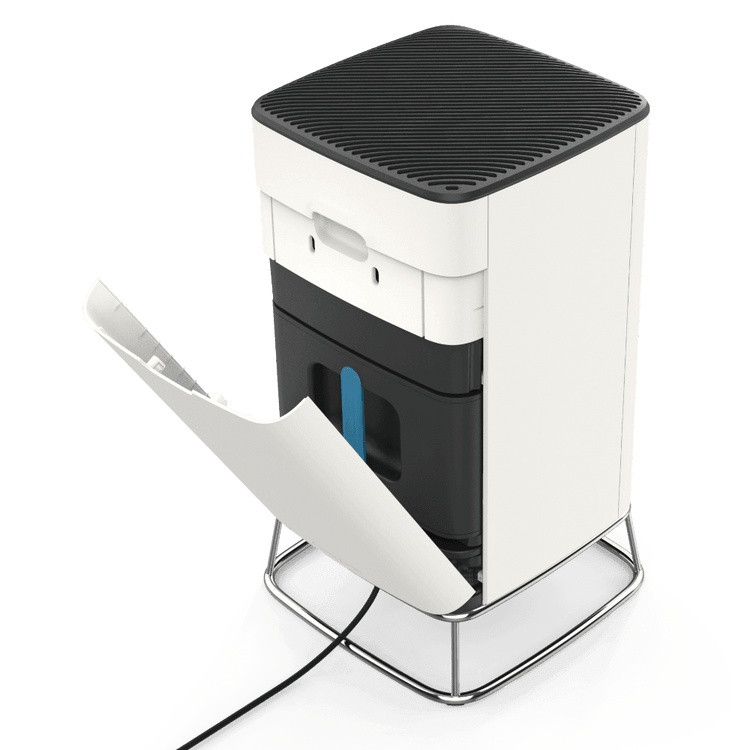
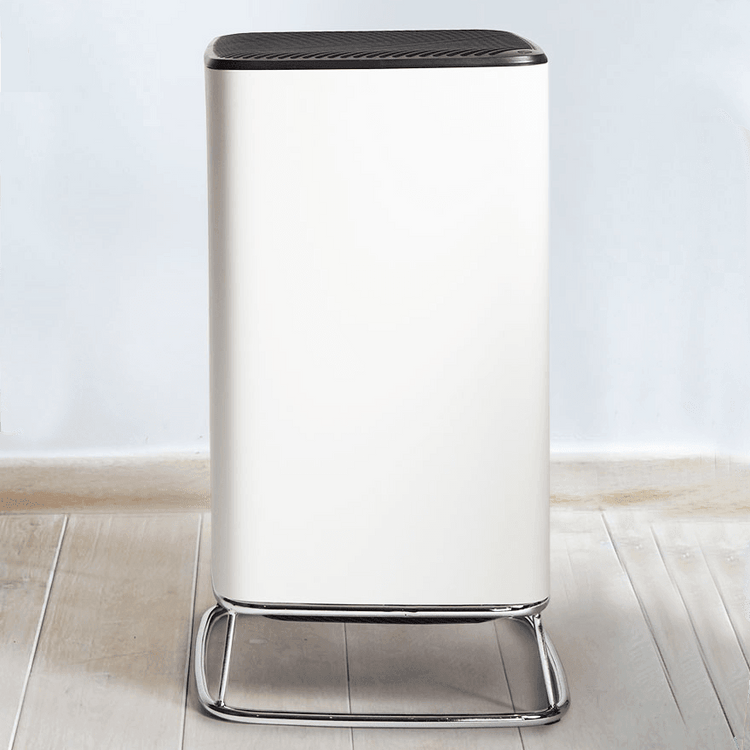

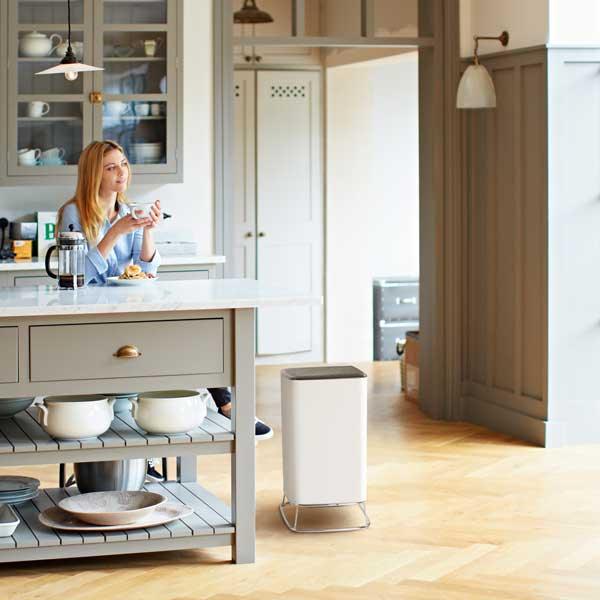
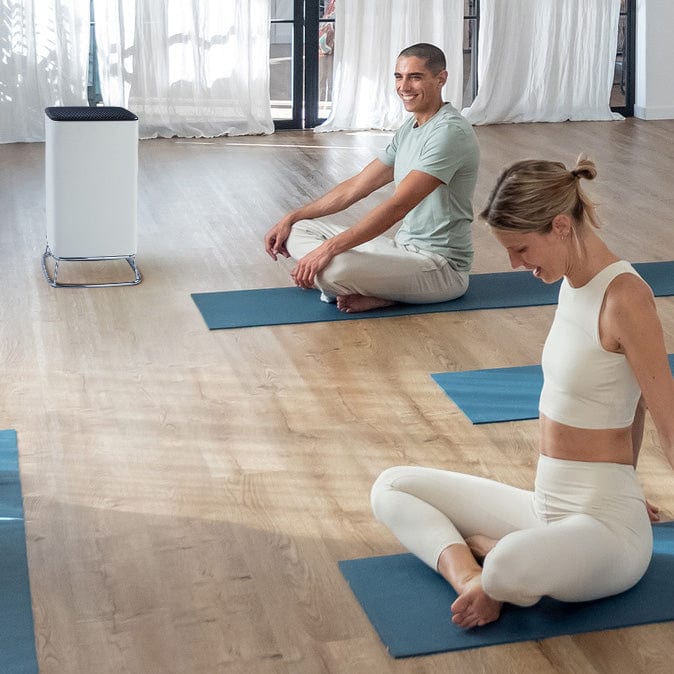
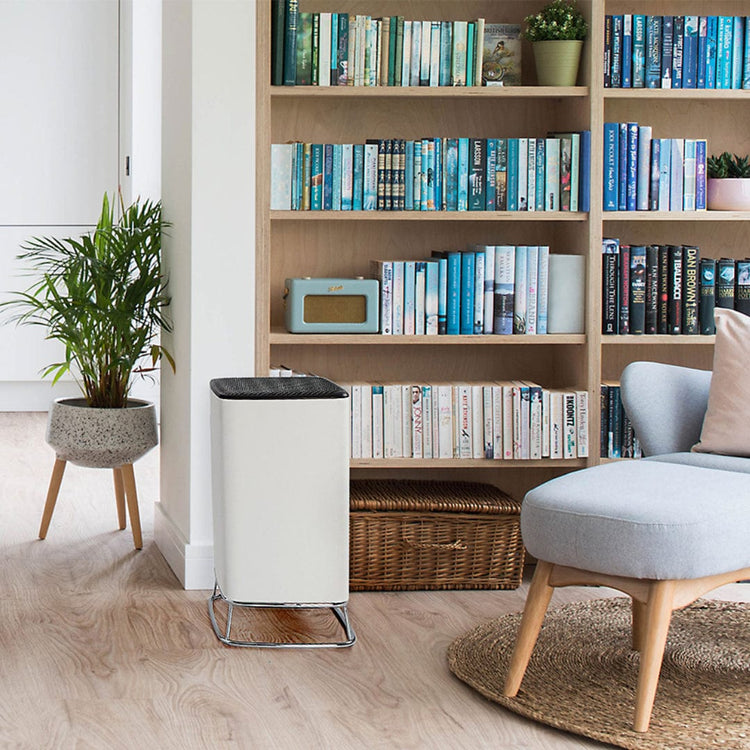
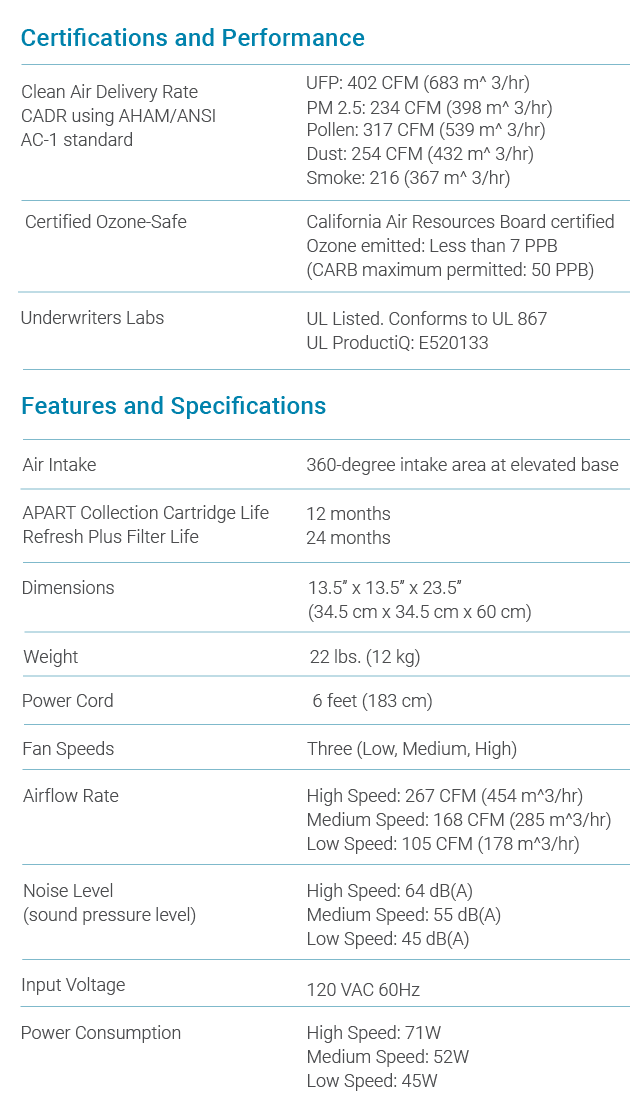

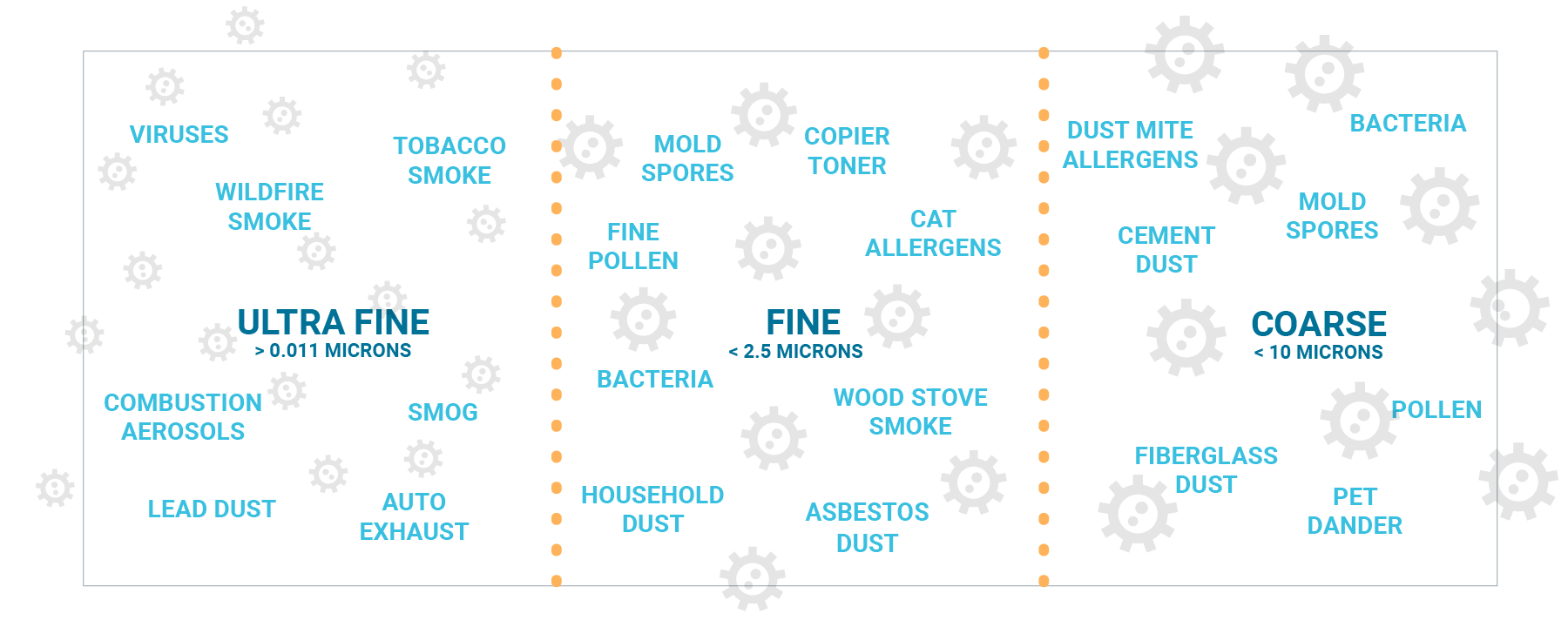

Fine particles too small to see—dust and dust mite waste, pollen, smoke, germs, and mold—can enter the upper respiratory tract and may worsen allergy symptoms. Ultrafine particles can penetrate further into the respiratory system, making their way into the lungs where they can cause inflammation.
While we can’t provide medical advice, we can tell you that effective air purification is frequently recommended by medical professionals for allergy sufferers.
Brio’s innovative APART (tm) technology is highly effective at removing fine and ultra-fine particles from indoor air. Because Brio doesn't clog, there's no drop off in air flow between filter changes and clean airflow is the key to better indoor air.
The short answer is yes.
For an air cleaner to reduce viruses in the air, it must be able to remove small airborne particles (in the size range of 0.1-0.5 microns).
In independent lab tests, Brio’s APART technology effectively removes particles including COVID-19 surrogate, in this size range in 15 minutes.
It is important to note, however, that reducing virus particles is just one part of protection plan, as explained by the EPA:
“When used properly, air purifiers can help reduce airborne contaminants including viruses in a home or confined space. However, by itself, a portable air cleaner is not enough to protect people from COVID-19. When used along with other best practices recommended by the Centers for Disease Control and Prevention, operating an air cleaner can be part of a plan to protect yourself and your family.”
Yes, Brio can help. Fine wildfire smoke particles may be as small as 0.4-0.7 microns. Independent testing shows that Brio’s APART particle removal effectively traps particles in this size range including wildfire smoke. And because Brio stays at peak performance between cartridge changes, you can be confident smoke particles are being removed effectively.
Since the most damaging particle pollution is not visible to the human eye, the best way to determine the air quality is by using a high-quality indoor air quality monitor or particulate sensor. Leave your IAQ monitor on all day and night to accurately detect and monitor particle pollutants in your home. Ideally, the monitor will be positioned at a location in the room where particle pollution may be the most significant (near a fireplace or stove, for example). You could also place it nearest to the people in the room—since they are affected by the air quality.
We suggest using a separate device as particle sensors and air quality monitors located onboard an air purifier may give a less accurate picture of the true levels of pollution in the room, since the air closest to the purifier will tend to be cleaner. In addition, they can go out of calibration leading to inaccurate readings.
You can use Brio in almost every room of your home, including the basement. Brio is ideal as a living room or bedroom air purifier. Brio is also well-suited to small and medium sized offices.
We think running Brio 24 x 7 is a great idea. Particle pollution in your home is often from ongoing, regular sources (dust and pets, mold, pollen, cooking, wood-burning fireplaces) or it could be episodic (a nearby wildfire, for example). Or both. Poor environmental air quality affects you inside your home, too.
Particle pollution is also dynamic within a room over the course of daily life. Doors open and close. People move from room to room. So do pets. And so do airborne particles. Rooms aren’t airtight. Windows leak. Heating systems exchange indoor and outdoor air.
Because of multiple types and sources of invisible particle pollution, we recommend leaving your Brio air purifier on, all day and all night. Set the fan to medium for everyday conditions and turn it to high when you need deep cleaning. The fan speed setting will also depend on the room size and your specific needs.
As there is less air movement at night, air purifiers can often be turned to a lower setting at bedtime. This really depends on the level of particle pollution and the effectiveness of your air purifier at a low fan speed. If you wake up in the morning and your air quality has gone down, you may want to turn the fan to a higher setting.
To gauge your air quality, we recommend using an independent air quality monitor for the most accurate information.
Brio’s APART technology draws particles out of the airflow, so there’s nothing to clog or slow the clean air delivery rate. And the cartridge is designed to hold a high volume of particles. Together these features add up to a long cartridge life. Your actual environmental conditions and use will determine how often it needs replacing. In less-polluted areas, the cartridge may last much longer than a year. In areas with higher, ongoing pollution, the cartridge may need changing more often.
We suggest changing the APART Collection Cartridge using Brio’s Check/Change Indicator as a guide or once every 12 months.
Our lab tests have shown that Brio's APART Collection Cartridge stays at a peak performance level 5-10 times longer than identically tested HEPA-style air purifiers. HEPA filters lose effectiveness between the recommended filter changes because of how HEPA-style air purifiers work. Trapping particles in the filter reduces airflow and causes the clean air delivery rate to decline.
Brio doesn’t have this issue.
Instead, Brio draws particles away from the airflow, so performance stays consistently high, with no drop in the clean air delivery rate, until the APART Collection Cartridge is completely full. HEPA filters can't make the same promise.
Yes, however, it’s important to understand what this means, exactly. There are a number of sources of ozone in the home, and the level of ozone in your home may be elevated by the presence of smog outdoors or by use of some home cleaning products. Thanks to Brio’s Refresh Plus filtration process, ozone in the living space can be reduced to a level below what it may have been before turning Brio on. Brio is certified as ozone-safe by the California Air Resources Board, the country’s most-stringent certifying organization for ozone.
Looking for top-rated air purifiers? Brio scored a 95 on Modern Castle! Here's why: Brio is an advanced electrostatic air purifier or air cleaner machine (the terms are synonymous). It is categorized as a portable air purifier or room air cleaner since it can be moved from room to room, or to different places in a room. Brio cleans the air using a patented technology solution, developed at the University of Washington. Brio is different from HEPA air purifiers in three ways: Brio uses electrostatic filtration which draws particles out of the clean air flow; HEPA is a form of mechanical filtration which blocks particles. This technology difference results in a performance difference: Unlike HEPA air purifiers, Brio's particle removal technology is non-clogging, so there is no drop off in airflow between filter changes. And this in turn creates the third major difference between Brio room air purifiers and HEPA air purifiers: Because Brio doesn't clog, its high-capacity air filters last much longer than similarly size HEPA air purifier filters. Brio will save you on filter replacements over the years - a cost that many don't think about when buying an air purifier, but one that adds up all the same.